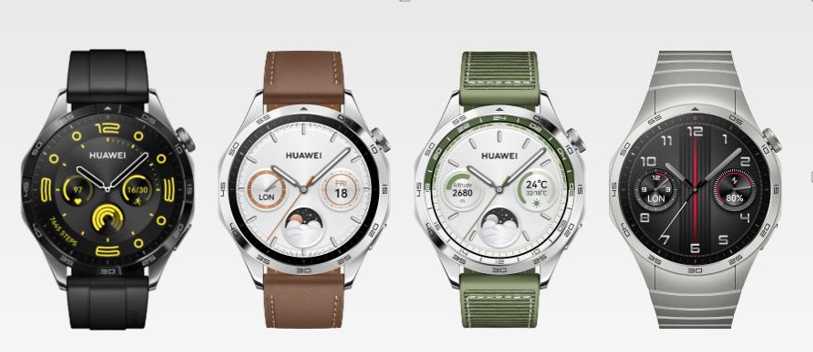How Do Smartwatches Change Fitness Motivation?

Smartwatches have redefined the way people approach fitness. These compact devices go beyond counting steps or displaying time; they create daily motivation to move, exercise, and adopt healthier routines. With features such as activity tracking, personalized reminders, and progress monitoring, smartwatches provide instant feedback that encourages consistent effort. They turn abstract fitness goals into tangible data and achievements, helping users stay engaged. Social challenges and digital rewards make exercise feel more interactive, turning solitary workouts into shared experiences. By combining convenience, accountability, and personalization, smartwatches shape how individuals view their physical health and sustain motivation for long-term progress.
The Psychology Of Fitness Motivation
Turning Goals Into Visible Progress
Fitness often fails because goals feel distant. Smartwatches solve this by making progress visible. Step counts, calorie tracking, and heart rate zones give immediate feedback. Instead of waiting weeks to see results, users can celebrate small daily wins. Closing activity rings or reaching streaks reinforces behavior through simple visuals. These features connect effort with achievement in real time, which strengthens motivation. Clear progress reduces discouragement and builds momentum, showing that even small actions matter. By making fitness measurable, smartwatches turn abstract goals into daily motivation that feels achievable and rewarding.
Accountability Through Reminders And Alerts
Consistency is the hardest part of fitness. Smartwatches support accountability by sending reminders to stand, move, or complete workouts. Gentle vibrations nudge users when they have been inactive for too long. Workout alerts keep routines structured and prevent missed sessions. These notifications act as external accountability partners, guiding people toward healthier behaviors. They reduce reliance on willpower alone by creating timely prompts. Over time, users begin to expect and even anticipate these cues, which shapes habits. This constant accountability makes it harder to ignore goals, improving long-term adherence to active lifestyles.
Positive Reinforcement And Rewards
Smartwatches use rewards to make fitness enjoyable. Digital badges, milestone celebrations, and weekly summaries highlight progress. Sharing achievements with friends or fitness communities multiplies this reinforcement. Positive feedback boosts motivation because it validates effort. Instead of seeing exercise as punishment, people start viewing it as a rewarding process. This shift in perception strengthens long-term commitment. By linking effort with celebration, smartwatches tap into the psychology of positive reinforcement. They transform workouts from tasks into accomplishments, sustaining enthusiasm and persistence even when progress slows or challenges arise.
Smartwatches As Fitness Companions
Personalization Of Workouts
Smartwatches adapt fitness to individual needs. They track personal metrics such as heart rate, recovery time, and sleep quality to suggest tailored workouts. This customization helps users avoid generic routines that feel irrelevant or overwhelming. Personalized insights create a sense of partnership between the device and the wearer. The watch feels like a coach that knows the individual’s body and adjusts guidance accordingly. With this tailored approach, motivation grows stronger because exercises align with personal goals and current fitness levels. Smartwatches make workouts smarter, not harder, building confidence and consistency.
Building Social Connections Around Fitness
Motivation strengthens when shared with others. Smartwatches encourage group challenges, step competitions, and progress sharing. Friends and family can celebrate milestones together, turning exercise into a community activity. This social element fosters encouragement, accountability, and even friendly rivalry. The knowledge that others see progress often motivates users to keep moving. Digital leaderboards and shared goals turn workouts into collaborative efforts instead of solitary struggles. By combining social interaction with fitness, smartwatches transform motivation from personal willpower into collective energy, making it easier to sustain active habits over time.
See also: 5 Essential Travel Tech Trends You Need to Know Before Your Next Trip

Balancing Data With Lifestyle Goals
While metrics matter, balance is essential. Smartwatches provide extensive data, from calories burned to sleep cycles. However, they also guide users to focus on long-term well-being rather than obsessing over numbers. For example, encouraging rest days alongside active ones prevents burnout. The watch supports both intensity and recovery, reminding users that motivation thrives when health is holistic. Striking this balance builds a healthier relationship with exercise. At this point, many reviews highlight models such as the watch gt6 as examples of devices that balance precision with lifestyle guidance, making fitness data practical instead of overwhelming.
Conclusion
Smartwatches change fitness motivation by combining psychology, technology, and lifestyle support. They make goals visible, provide accountability, and reward effort, helping users stay consistent. They also personalize workouts, encourage social engagement, and balance performance data with overall well-being. These features turn fitness from a difficult obligation into a guided and enjoyable process. While motivation ultimately comes from within, smartwatches act as reliable companions that reinforce healthy choices every day. They bridge the gap between intention and action, supporting long-term commitment. As technology evolves, smartwatches will continue to influence how people approach fitness, transforming routines into lasting habits.





